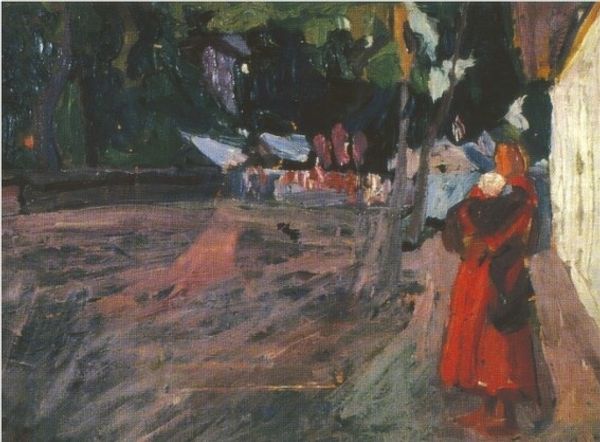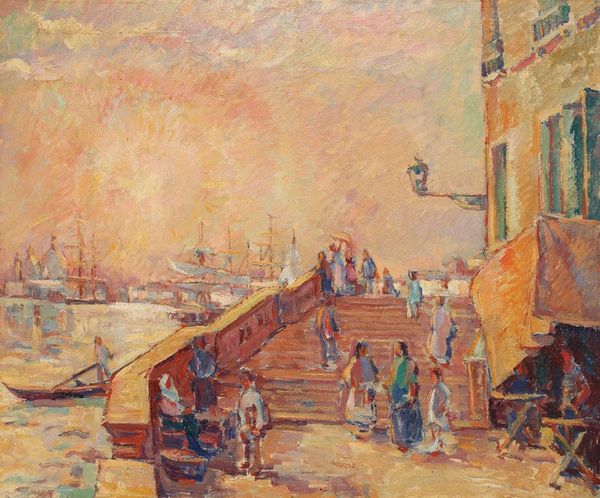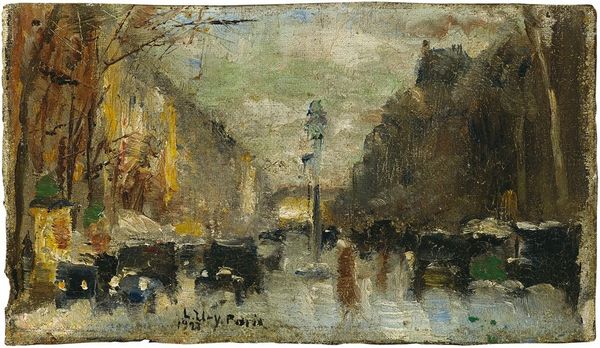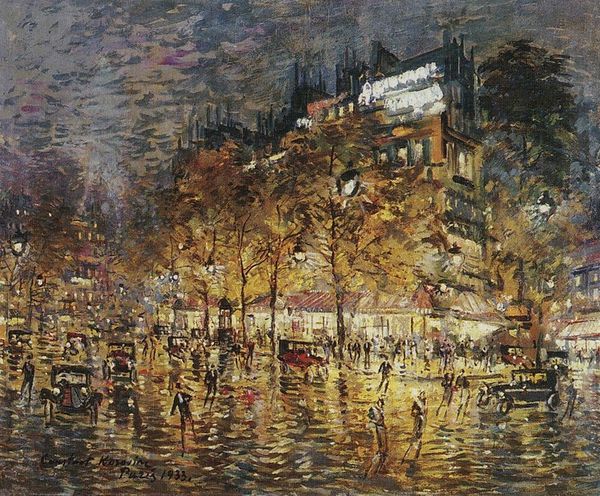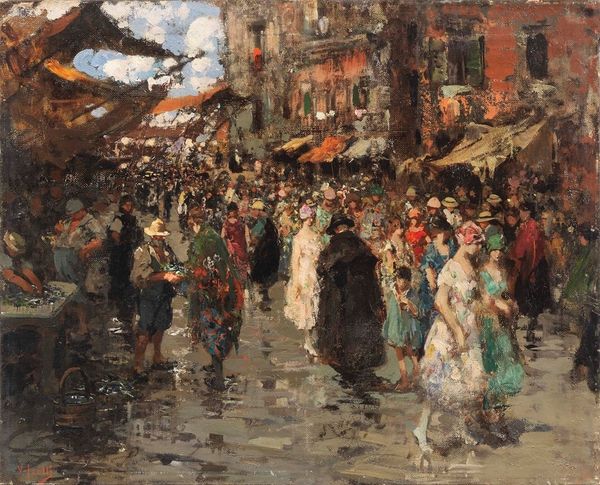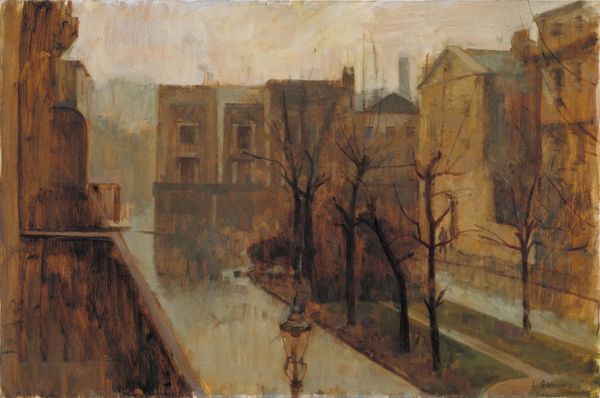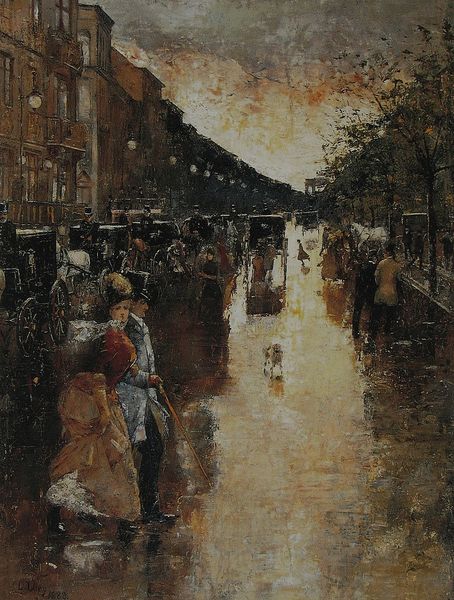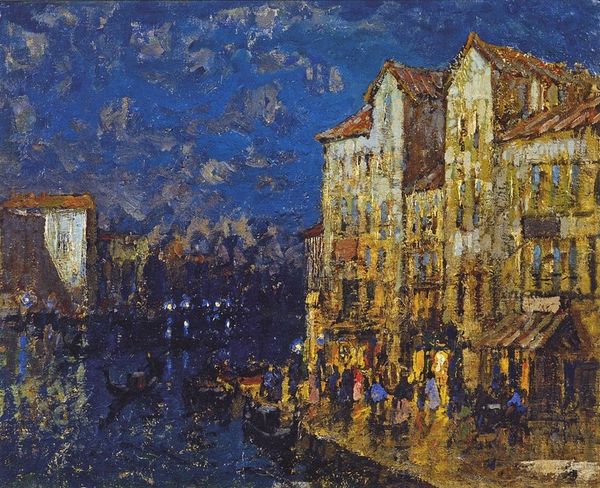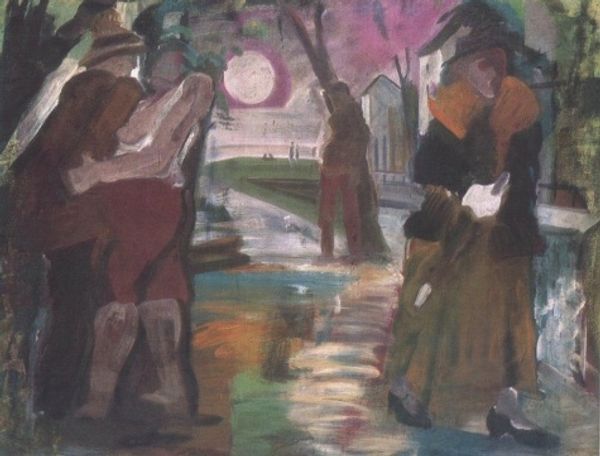
painting, oil-paint
#
painting
#
impressionism
#
oil-paint
#
landscape
#
impressionist landscape
#
possibly oil pastel
#
oil painting
#
romanticism
#
cityscape
Copyright: Public Domain: Artvee
Curator: Let’s examine this city scene—’Paris’ by Konstantin Korovin. It looks like it's oil paint, though the information we have about its date is unfortunately scant. What strikes you first? Editor: Well, it's definitely a romantic cityscape at night, with reflections shimmering on the wet streets. I’m drawn to how atmospheric it is. What materials do you think helped Korovin to create such evocative scenery? Curator: Precisely. Notice the thick, visible brushstrokes? Consider how the materiality of the oil paint itself lends a sense of immediacy. What does that speak to, about its means of production and, by extension, its wider appeal? Editor: So you're saying the very act of applying the paint contributes to the scene's romantic quality? How the visible brushstrokes add to the artistic value of the piece? Curator: It’s more than that, the labor involved is visible, making this far from just an image but instead, a clear piece of production, don't you agree? The materiality broadcasts a sense of bustling urban labor and consumer culture right at the surface. How does Korovin represent figures in this scenery, what do their clothes represent for instance? Editor: Right, those figures walking by, it tells a story through fashion of production! I can see how concentrating on materials reframes it. What initially looked like mere Impressionism goes a lot deeper than atmospheric impressions, right to its method. Curator: Exactly! Thinking about art through its material construction unveils its embedded values and relations. I see so much more that I hadn’t appreciated at first. Editor: Same! It changes how I look at painting—now it is so much more about the paint itself and how it shapes meaning.
Comments
No comments
Be the first to comment and join the conversation on the ultimate creative platform.



